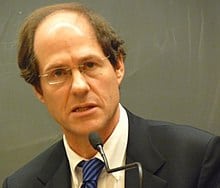CPP Repeal Likely Won’t Help Coal Much, Might Hurt Nukes
The focus of the coverage of the Environmental Protection Agency’s (EPA’s) plan to kill the Obama administration’s Clean Power Plan (CPP) has been on what it will mean for coal. The consensus is that it won’t have much impact, as major consumers of steam coal have already written off the fuel as a result of the rise of cheap natural gas and the flat demand for electricity.
What hasn’t gotten much attention is that the EPA repeal could hurt the case for nuclear power, which largely rests on the grounds that atomic power has no carbon emissions, providing great value. What if carbon emissions have negligible value? That means, in economist speak, that carbon dioxide emissions are not much of an “externality” that should be internalized in the regulation of coal-fired power plants. That’s a pillar behind the Trump administration’s attack on the Obama plan.
When the Obama EPA promulgated the CPP, it was founded on the work of an interagency group of policy wonks that came up with a figure for the global social cost of carbon of about $36/ton of CO2 emissions, rising to about $42/ton in 2020. In recent opinion article for Bloomberg, Cass Sunstein, Harvard legal scholar who was a key Office of Management and Budget regulator in the Obama White House from 2009 to 2012 recalled that there was a lot of discussion over what was admittedly a difficult cost to define. The courts eventually upheld the EPA calculation.

Sunstein wrote, “It’s true that reasonable people have argued against use of the global measure. In their view, American regulators should focus only on damage to Americans.” This fall, the Federal Energy Regulatory Commission rejected use of the social cost of carbon in reviewing a gas pipeline case, concluding, as Utility Dive wrote, that “no consensus exists for the appropriate discount rate for analyses and there are no established criteria identifying monetized values to consider.”
Sunstein said the Trump administration “is perfectly entitled to disagree with, and ultimately to reject, the judgments of the Obama administration.” That’s exactly what EPA did in rejecting the CPP, arguing that the social coal of carbon is in the range of $1-$6/ton.
Sunstein complained, “But if the EPA is going to alter its position, to ignore harm to those outside our country, and to treat the social cost of carbon as close to zero, it owes the American people, and the world, some kind of explanation.” It offered little background. Said Sunstein, “As Ring Lardner once put it, ‘Shut up, he explained.’”
But the administration’s scorn for the social cost of carbon has implications beyond coal power. The nuclear industry has been hanging its hat for several years on the social cost of carbon, and nuclear technology’s avoidance of that cost, to argue for changes in wholesale electric markets to value carbon dioxide emissions reductions. The Nuclear Energy Institute web site proclaims that nuclear “is the only low-carbon option to help meet forecasted global electricity demand.”
The two states that have taken action to keep uneconomic nuclear plants in wholesale markets, Illinois and New York, have both relied on the Obama EPA’s calculation of the social cost of carbon. It’s likely the interests challenging those state actions at FERC and in the courts will use the Trump administration’s reversal on the cost of carbon emissions against the state actions.
The nukes may hope to ride the DOE-FERC rulemaking on “resilience” as an argument to subsidize them with cost-based rates, badly undermining the competitive wholesale markets. But if they hope to make that stick, there will have to be some sort of rigorous approach to define resilience and put a defensible value on it. That’s likely to be at least as problematic as the social cost of carbon.